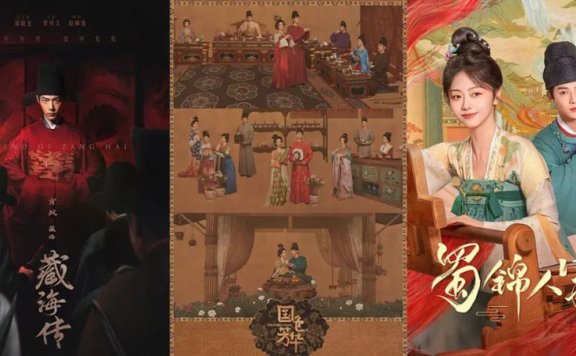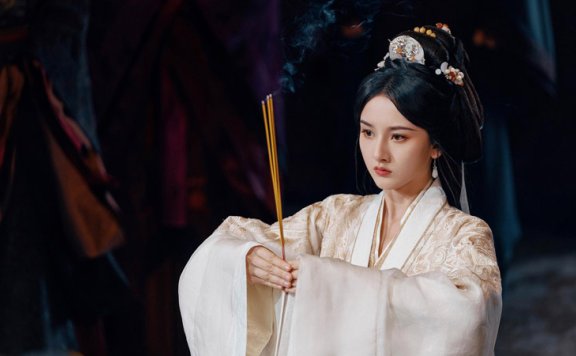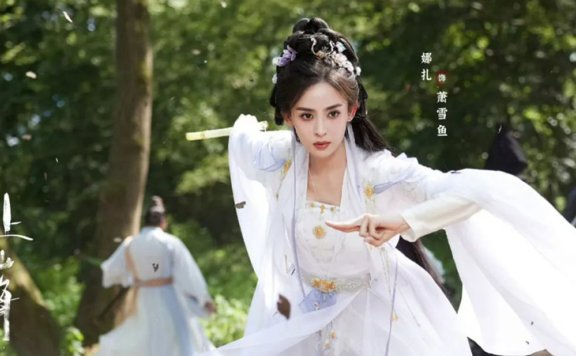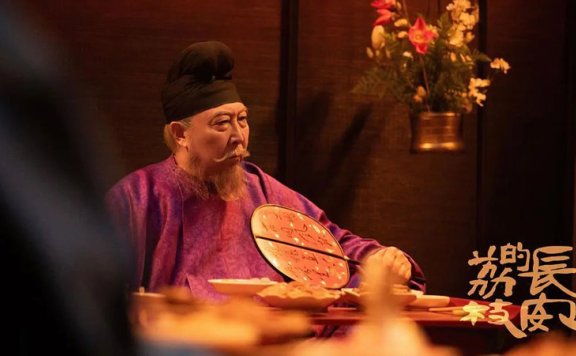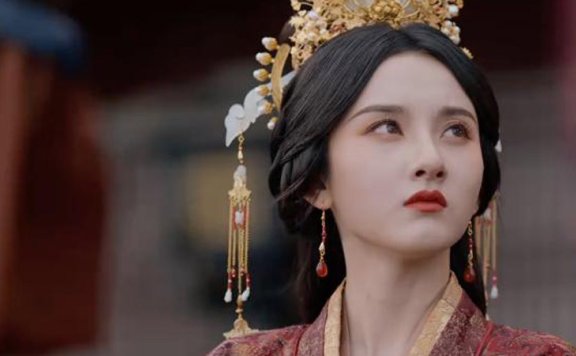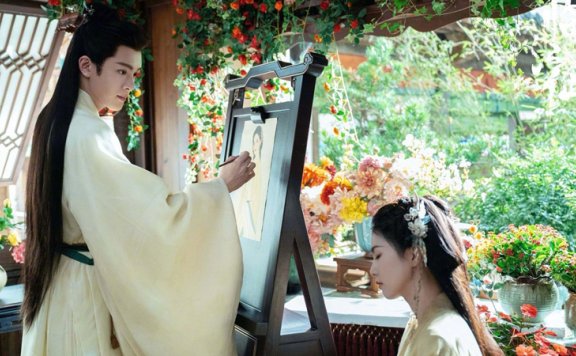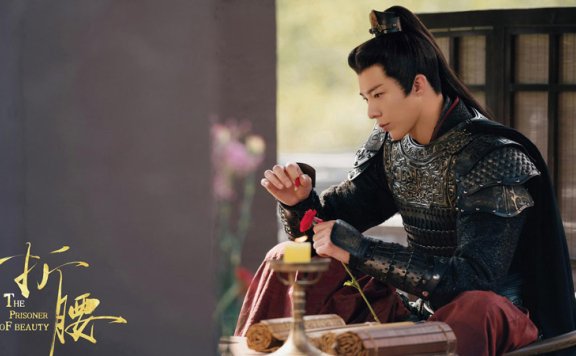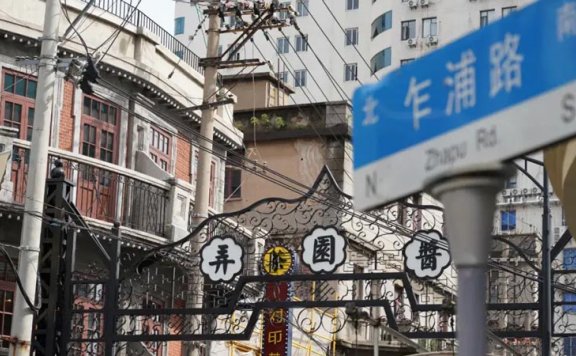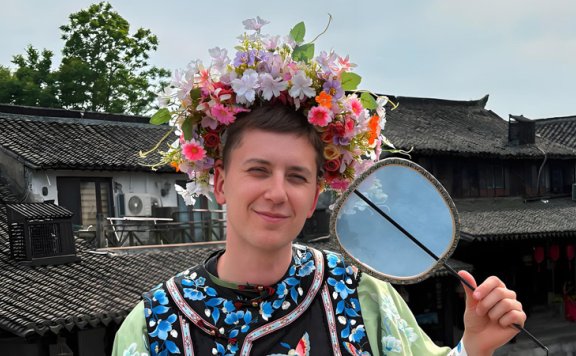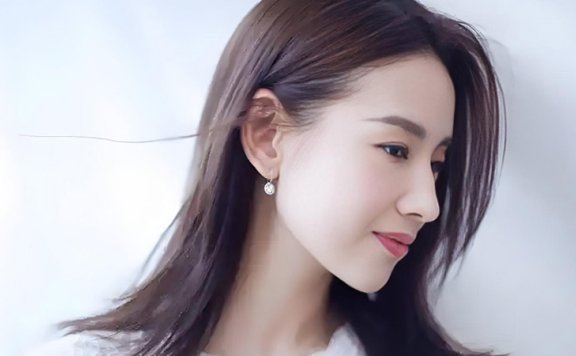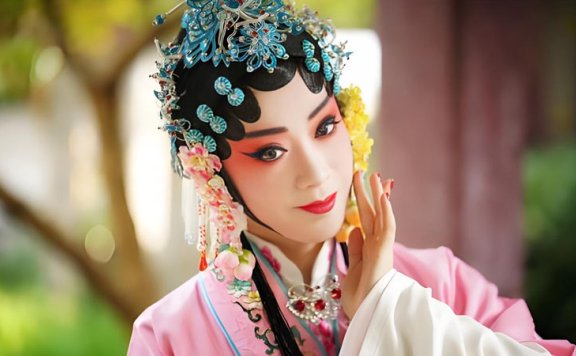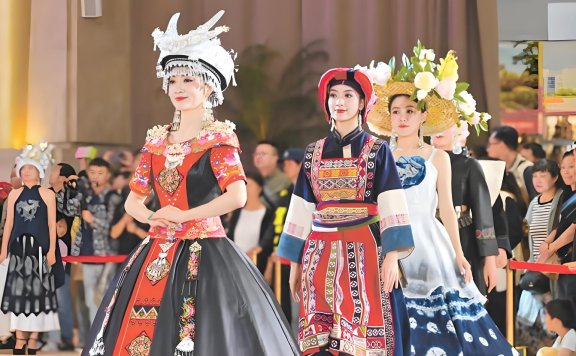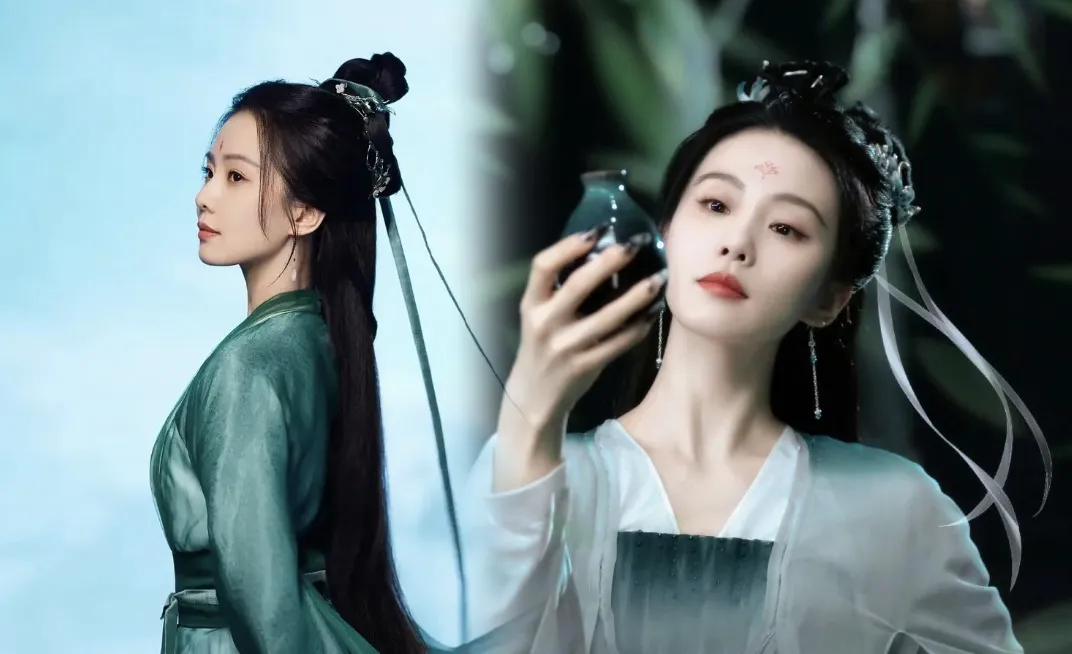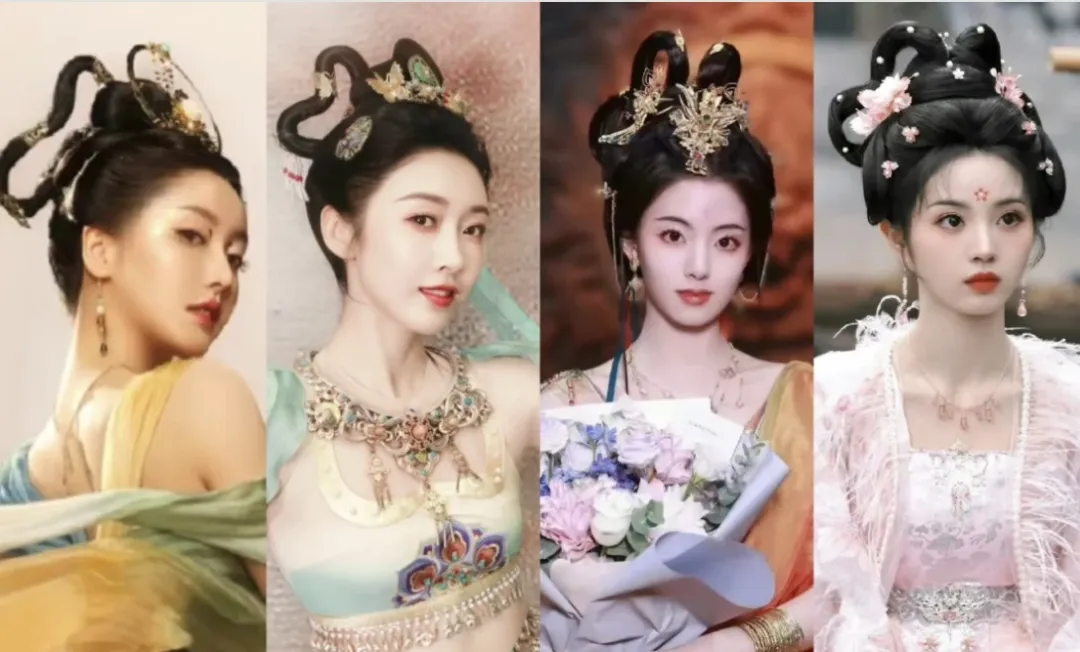Article
搜索结果:
-
Who's Truly Honoring Tradition in Chinese Costume Dramas?
Integrating traditional culture into historical dramas isn't new. But more and more recent productions are going beyond aesthetics—embedding cultural heritage into the storylines themselves. Take Legend of Zang Hai (藏海传), a recent release that weaves an intricate political tale around the ancient art of geomantic architecture, or kanyu (堪舆营造)—a feng shui-based approach to site planning in traditional Chinese construction. And this is far from an isolated case. In A Dream of Splendor (梦华录), Song dynasty tea culture is not just a visual garnish—it defines the heroine Zhao Pan'er's livelihood and values. Similarly, The Scent of Time (为有暗香来) showcases the traditional art of herbal perfumery, Flourished Peony (国色芳华) explores plant-based fragrance making, and Brocade Odessey (蜀锦人家) dives into Sichuan's iconic brocade weaving. And more of these culture-driven dramas are in the pipeline. Could this be a meaningful evolution in the genre? As traditional Chinese culture continues gaining mainstream appeal, what should period dramas aim to achieve in order to truly tell cultural stories well? Why Does It Feel So Right? The fusion of traditional culture and historical drama isn't exactly groundbreaking—it's just finally being taken seriously. The first phase of this integration largely involved the adoption of Eastern aesthetics across costumes,… -
Top 5 Must-Watch Song Zuer's Historical & Fantasy Series
Song Zuer's journey—beginning as a fiery child deity in 2009 and maturing into nuanced historical heroines—offers a unique lens through which to explore C-drama's shifting landscapes. I've curated her most iconic roles that showcase her evolution from child star to versatile leading lady. Here are 5 masterpieces blending visual poetry and storytelling brilliance—perfect for historical/fantasy lovers! The Demon Hunter's Romance 无忧渡 Aired: April 12, 2025 Period: Fictional Tang-dynasty-inspired world with human-yao (supernatural beings) coexistence Genres: Xianxia, romantic fantasy, mystery Main Roles: Song Zuer (Banxia), Allen Ren (Xuanye) Adapted From: Novel Banxia by Banming Ban'ai In a Tang Dynasty-inspired realm fractured by mutual distrust between humans and yao (妖, nature spirits), Banxia is an outcast village girl whose ability to perceive spirits brands her a "cursed seer." Her path collides with Xuanye, a disillusioned demon hunter enforcing the Celestial Ministry's brutal purge of rogue yao. When a series of spirit-related disasters threatens both realms—a plague of nightmare-consuming Mengmo (梦魔) in farming villages, and spectral assassins targeting human officials—they form a reluctant pact to investigate. Their quest uncovers a darker truth: a primordial void entity is manipulating historical human-yao resentments to trigger a war. Banxia's evolving power to communicate with spirits (not… -
Tencent Video's 2025 H2 Costume Drama Lineup
Tencent just dropped their big lineup for the second half of 2025, and it's packed with some seriously anticipated historical/costume dramas. Let's dive in and see which one has you hitting that 'remind me' button! 1. Hundred Blossoms' Blood (百花杀) Stars: Meng Ziyi, He Yu, Xu Zhengxi The Story: After her family is wiped out, Gu Qingzhi wakes up with a new identity: Shen Xi, the Princess of the Northwest. She transforms from a proud "desert rose" into a ruthless avenger, determined to control her own destiny and play the game of power from the heights. Crown Prince Xiao Huayong, hiding a sharp mind behind a frail exterior, sees through the court's schemes. Their paths intertwine as they join forces to navigate the treacherous political landscape. The Buzz: This is Meng Ziyi's first big historical drama since her hit "The Princess and the Werewolf" (九重紫). She prepped intensely, studying perfumery for six months to nail her role. It's also a reunion for Meng Ziyi and Xu Zhengxi after "Romance of a Twin Flower" (花琉璃轶闻). While Xu Zhengxi isn't the male lead this time (that's He Yu), fans are hyped because their on-screen chemistry might just steal the show. Definitely one… -
Talking with the Creators Behind The Litchi Road
A saying from ancient China goes like this: "One day, the color fades. Two days, the fragrance goes. Three days, the taste is gone." That's how fragile fresh lychees were—especially when you're trying to haul them over 5,000 miles from Lingnan to the imperial capital of Chang'an. For a low-ranking clerk like Li Shande, the lead character in The Litchi Road, this was basically mission impossible. Fast forward 1,200 years, and author Ma Boyong found himself in a similar bind: finishing a 70,000-word novel in just 11 days. Running on pure adrenaline (or what he called "flow state"), Ma pulled it off. And in his story, Li Shande does too—armed with nothing but math skills and the kind of desperation that leaves no room for failure. This whole "impossible mission" theme didn't stop at the book. It carried over to the TV adaptation too. The production team faced its own version of the lychee run: staying loyal to the book while also making bold changes, and doing it at a time when short-form web content is king and long-format storytelling feels like an endangered species. How hard was it? Well, that depends on how fast the TV industry decides to… -
Jewelry in The Prisoner of Beauty
You've probably already heard the buzz around The Prisoner of Beauty—this season's hot topic in Chinese historical TV. But let's forget about the plot for a second. As a jewelry person, I couldn't take my eyes off the accessories. The hairpieces, the pendants, the gemstone details—they're not just for show. They're little time capsules of Han dynasty aesthetics, each piece tied to materials and craftsmanship that were actually used two thousand years ago. The story seems set around the late Eastern Han period (roughly 2nd to 3rd century AD). So let's talk about what jewelry looked like back then—what stones they had, where they came from, and who got to wear what. First, let's talk about the crown jewel of the era: Hetian jade (a highly prized nephrite jade from Xinjiang). This wasn't something ordinary people could casually buy. Most of it traveled along what historians call the "Jade Road", a network of ancient trade routes connecting Xinjiang to central China. According to excavated Han dynasty documents from Dunhuang, one stone could cost up to 300 qian. Back then, large-scale mining wasn't really a thing. Miners would wait for seasonal floods to reveal river-polished pebbles, then trek on foot through… -
Feud Hits 10K View Club, But Is Xianxia Drama Being Left Behind?
That big fantasy drama Feud just wrapped up, hitting major streaming numbers, but man, the reactions were all over the place. The head honcho at the studio, Yu Zheng, is proudly claiming his first foray into "Xianxia" (Chinese immortal hero fantasy) captured "authentic Chinese mythological essence." Meanwhile, folks outside this bubble are scratching their heads: "What was that? Xianxia? Seriously, who even watches this stuff anymore?" Here's the weird spot Xianxia dramas are in: they do pull big numbers sometimes, no question. But their audience feels super niche. Outside that dedicated fanbase? Barely a blip on the radar. Forget about breaking into the mainstream like other hits do. Creatively? They're stuck in a serious rut. Critics have been hammering this for ages: Predictable world-building checkboxes. Costumes and sets that look copy-pasted. The endless re-runs of the "three lifetimes, sweet-then-bitter romance" template. Way too much "love story," not nearly enough actual "heroics" (the 'Xia' in Xianxia). But maybe the real reason Xianxia feels out of step is simpler: it's not matching the current mood. Think about it. Xianxia's core stories haven't really changed in 20 years. It's always about cultivating immortality and saving the world. The Legend of Sword and Fairy… -
7 Essential Allen Ren Series That Define a Genre
For over a decade, Allen Ren Jialun (任嘉伦) has reigned as Chinese television's undisputed "Costume Drama King"—a master of emotional depth who transforms mythical worlds into visceral human experiences. From tortured immortals to morally complex half-demons, his performances fuse breathtaking aesthetics with soul-wrenching storytelling. Here's your definitive guide to his seven most iconic roles. Under the Power 锦衣之下 Aired: December 2019 Period Background: Ming Dynasty Genres: Historical Suspense, Romance, Detective. Main Roles: Ren Jialun (Lu Yi), Seven Tan (Yuan Jinxia) Adapted From: Blue Lion's novel Set in the Ming Dynasty's Jiajing era, the series centers on Lu Yi, a feared Jinyiwei commander whose icy efficiency masks a tormented past, and Yuan Jinxia, a street-smart detective from the Six Gates investigative bureau. Initially adversarial—Lu Yi views Jinxia's optimism as naïveté, while she resents his ruthless methods—their dynamic shifts when ordered to collaborate on a high-stakes corruption case involving royal intrigue and salt smuggling. As they uncover layers of conspiracy, their friction evolves into mutual respect, then forbidden love, complicated by Jinxia's discovery that Lu's father orchestrated her family's massacre years prior. The plot masterfully balances political tension with emotional stakes, culminating in their alliance against a common enemy: a royal faction… -
6 Period Dramas Charting Liu Yuning's Acting Journey
Once known primarily as a singer, Liu Yuning (刘宇宁) has rapidly ascended as a powerhouse in Chinese historical and fantasy dramas. With his commanding presence (cm height), deep vocal delivery, and nuanced portrayals of complex anti-heroes, he's redefined the archetype of the "ruthless yet redeemable" male lead. Here are five essential series showcasing his evolution—and why they dominate streaming charts. The Prisoner of Beauty 折腰 Aired: May , 25 Period: Warring States-inspired fictional dynasty Genres: Historical romance, political intrigue, family saga Main Roles: Liu Yuning (Wei Shao), Song Zuer (Qiao Man) Adapted From: Novel by Penglai Ke Set in a war-torn realm mirroring China's Warring States period, warlord Wei Shao is consumed by vengeance after his family's massacre by the rival Qiao clan. To cement a fragile truce, he forces a political marriage with Qiao Man, the daughter of his enemies. Their union begins as a cage of mutual suspicion: Wei Shao views Qiao Man as a pawn to humiliate her family, while she navigates his court as both hostage and diplomat. Yet Qiao Man transcends her role through strategic brilliance—exposing grain-hoarding conspiracies, redirecting Wei Shao's rage toward shared foes, and brokering alliances using ancestral rituals. As external threats mount… -
China's Visa-Free Shopping Revolution Sparks Global Spending Surge
China's bold visa relaxation and innovative tax refund reforms are igniting an unprecedented wave of international tourism and cross-border shopping. Cities like Beijing, Shanghai, and Chengdu have become magnets for global travelers seeking unique experiences and value, transforming China from the "world's factory" into a burgeoning "global consumption hub". Turkish tourist Feridun Koc exemplifies this trend, marveling at Li Ning's (李宁) innovative footwear in Shanghai while his wife Hande stocks up on traditional Chinese remedies, all facilitated by instant tax refund counters that make purchases feel like direct discounts. This synergy of open-door policies and shopping convenience is reshaping perceptions and fueling an economic renaissance, with cultural ambassadors like Italian blogger Ale and influencers such as "Agent00" bridging global audiences through authentic digital storytelling. Policy Innovation: Fueling the Shopping Frenzy The cornerstone of this boom is the groundbreaking "instant refund at purchase" service, now operational nationwide. International shoppers receive their 11% Value-Added Tax (VAT) rebate immediately at partner stores upon presenting their passport and invoice, eliminating the traditional airport queue. This instant gratification, as noted by Huang Huang (黄璜) from the China Tourism Academy, creates a powerful "spending-reimbursement-spending" loop, encouraging tourists to reinvest their refunds in further purchases during their… -
Where Crime Drama Meets Living History on Zhaopu Road
When Zhang Ziyi (章子怡) stepped onto the Shanghai International Film Festival red carpet, she didn’t just promote her latest film She's Got No Name (酱园弄); she invited the world into its hauntingly authentic backdrop: Zhaopu Road. This historic street in Hongkou District, meticulously restored to mirror 1940s Shanghai, has transcended its role as a film set to become a cultural time capsule. As Zhang’s on-screen journey through Shanghai’s complex female narratives unfolds, Zhaopu Road emerges as a tangible bridge between cinematic artistry and urban heritage - a place where flickering neon signs and cobblestone alleys whisper tales of resilience and reinvention. Film Set Reborn Zhaopu Road’s metamorphosis began in earnest last September, when its "replica-reality" renovation debuted. Designers adhered to a "repair the old as old" philosophy, resurrecting every faded brick and vintage storefront to match archival photographs of Republican-era Shanghai. At its heart stands the restored Victory Cinema, an Art Deco landmark whose geometric facade anchors the streetscape. Around it, retro shop signs - "Ruyi Silk Emporium," "Double Happiness Teahouse" - hang beneath wrought-iron street lamps, casting shadows that dance like celluloid frames across weathered walls. The street’s authenticity isn’t merely cosmetic. Artisans sourced reclaimed wood for store counters… -
When Global Travelers Become China's New Dynasty Stars
As international tourism rebounds across China, an unexpected cultural phenomenon has emerged: foreign visitors donning elaborate historical costumes to pose against imperial backdrops. French traveler Titi became an overnight sensation after sharing photos of himself dressed as a Qing Dynasty "gege" (imperial prince) in Xitang Water Town, his green silk robe and floral headdress contrasting strikingly with ancient stone bridges. "People kept telling me I looked beautiful," Titi remarked, describing how the costume transformed his travel experience. His social media post attracted floods of comments like "You look like a real prince!" and "That floral crown is perfection!" This trend reflects a deeper cultural engagement, with China welcoming 736,740 foreign tourists in Q1 2025 alone—a 39.2% year-on-year surge. Ancient palaces and gardens now serve as open-air studios where travelers from Malaysia to South Africa reinvent themselves as Ming scholars, Tang empresses, or Qing nobility. For many, these photoshoots represent more than souvenirs; they're immersive journeys into China’s living history. As Titi explained while quoting classical poetry in a later post: "Dressing in period clothing makes historical sites feel alive. When Chinese tourists ask for photos with me, it becomes a shared celebration." Selfies That Transcend Cultures What began as curiosity… -
Silk Road Renaissance: Hanfu Fever Sweeps Global Social Media
The rustle of embroidered silk now echoes from Shanghai's Tianzifang to Xi'an's ancient walls as international travelers embrace hanfu with infectious delight. What began as cultural curiosity has blossomed into a full-blown transnational phenomenon, with foreign influencers and tourists donning Ming dynasty robes and Tang-style ruqun to create viral content that transcends language barriers. This sartorial bridge between eras and continents reveals how traditional Chinese garments are becoming 21st-century cultural connectors. Destination Dressing Historic sites transform into immersive stages where hanfu unlocks deeper travel experiences. In Suzhou's Humble Administrator's Garden, Slavic creator Ana Petrovna floats across zigzag bridges in blush-pink chiffon, her movements harmonizing with centuries-old pavilions. The visual poetry of her ensemble against classical architecture drew thousands of Instagram saves. Urban studios cater to global clients with specialized services. Shanghai's Hanyi Huashang studio stocks plus-size options and offers bilingual styling consultations. "We adjust makeup for deeper eye sockets," explains owner Li Mei, noting 40% of June bookings came from overseas visitors. Iconic landmarks inspire theatrical transformations . At Xi'an's Drum Tower, British photographer Tom Higgins commissioned a dragon-embroidered emperor's robe. "The weight of the gold-threaded cloak made me stand differently—more regal," he laughs. His "Three Imperial Poses" reel trended on TikTok… -
Dong Jie’s Second Act Beyond the Silver Screen
The spotlight shifts from film sets to clothing racks as 45-year-old actress Dong Jie (董洁), once the nation’s beloved "Cold Girl" fromThe Golden Era, embarks on an unexpected entrepreneurial journey. Recent candid photos reveal her meticulously arranging garments in a soon-to-open boutique in Hebei—a quiet yet powerful declaration of her new identity beyond acting. This unscripted career pivot, stripped of celebrity pretense, showcases resilience forged through personal and professional storms. From Camera to Clothing Rack Dong Jie’s transition from acclaimed actress to fashion entrepreneur defies the typical celebrity endorsement path. Photos captured by customers reveal her scrutinizing fabric textures and adjusting displays with artisan-like precision. Dressed in minimalist white cotton and denim, her effortless grace mirrors the aesthetic philosophy of her brand: understated luxury anchored in craftsmanship over ostentation. Her career’s trajectory reads like a screenplay itself—meteoric fame via iconic roles, followed by a devastating fall from grace during a tumultuous divorce and scandal. The ensuing years saw her retreat from public life, with brief attempts at resurgence, like 2023’s Sisters Who Make Waves, yielding muted applause. Acting’s instability ultimately steered her toward fashion, where control replaces casting calls. The seeds of this reinvention were sown during 2022 lockdowns, when… -
A Dream of Red Mansions Inspires a New Era
Beneath the stage lights of a Kunqu opera performance, Du Liniang (杜丽娘) glides forward, the iridescent blues and greens of her diancui (kingfisher feather art) headdress shimmering with every step. In the audience, 90s-generation jewelry designer Wang Shenglin (王圣临) watches his creation come alive, a testament to centuries-old craftsmanship captivating a modern crowd. This scene encapsulates a vibrant cultural renaissance: young artisans are breathing new life into China’s imperial jewelry traditions, transforming intricate techniques like diancui (点翠), filigree, and enamel work from museum relics into coveted “New Chinese Chic” accessories. From social media sensations to sold-out night classes, these artisans aren’t just preserving history—they’re rewriting it for a generation proud of its heritage. Artisans Rekindle the Flame Social media platforms buzz with admiration for Wang Shenglin’s creations. His designs—a diancui coronet adorned with “mountain-sea” motifs, silver-gilded filigree peony hairpins, or butterfly earrings inspired by Palace Museum treasures—garner thousands of “stunning!” and “so ethereal!” comments. Followers eagerly inquire about purchasing these wearable pieces of history, blurring the line between cultural appreciation and contemporary fashion. The passion extends beyond online admiration. Young creators immerse themselves in meticulous apprenticeships. Lü Jikai (吕纪凯), another 90s talent, spent a year painstakingly recreating a Qing Dynasty… -
2025 Huairou National Trend Culture Season Kicks Off
The series of activities of the 2025 Beijing Great Wall Culture Festival in Huairou District - the "2025 Huairou National Trend Culture Season" will set off a national trend fashion in Huairou District, Beijing from July to October. Chinese and foreign Hanfu enthusiasts experienced immersive Hanfu travel photography in Qinglong Gorge, Huairou, Beijing, preheating the "2025 Huairou National Trend Culture Season" which will kick off in July. Hanfu Tourism Photography Theme Experience As the first pre - heating event, the immersive Hanfu travel photography theme experience was recently held in Qinglong Gorge. Twenty Chinese and foreign Hanfu enthusiasts gathered in Huairou, becoming the first batch of "Hanfu experience officers" to feel the charm of the integration of the national trend and nature, and let the world see the new expression of Chinese aesthetics where tradition and modernity are intertwined. "This is a blue - and - white porcelain bowl with a painting of ladies from the Ming Dynasty. We dressed up and took photos imitating the scene here, which made me feel the fun of the ancients painting their lives on porcelain." The influencer "Xiaoxi", who participated in the event, has had a strong interest in traditional culture since childhood.… -
Dissecting Lin Jiang Xian's Chaotic Finale & Broken Promises
The much-anticipated finale Lin Jiang Xian(临江仙), starring Bai Lu (白鹿) and Zeng Shunxi (曾舜晞), promised a groundbreaking blend of "divorce xianxia," intricate suspense, and infinite loops. Creator Yu Zheng’s (于正) bold marketing framed it as a genre revolution. Yet, the concluding four episodes delivered not a satisfying resolution, but a maelstrom ofjarring plot twists,hollow characterizations, andnarrative whiplash. Audiences who invested weeks deciphering clues were left bewildered, questioning if innovation was merely a facade for chaotic storytelling. The finale exposed a core truth: a cascade of reversals means little without logic or emotional grounding. What began as a daring experiment concluded as a cautionary tale of style over substance, leaving viewers to untangle the debris of a meticulously marketed, yet fundamentally flawed, narrative ambition. The Hype vs. The Hollow Core Yu Zheng’s pre-release campaign toutedEternal Immortalityas a pioneer—the first "divorce xianxia" drama. This premise centered on Bai Jiusi (Zeng Shunxi) and Hua Ruyue (Bai Lu), a celestial couple navigating a bitter separation entangled with amnesia, deception, and layered conspiracies. Promises of "infinite loops" and psychological suspense fueled fan theories and meticulous plot dissection. The central mystery revolved around identities like Yin Tongzi and the fate of their child, Shi’an. However, the execution crumbled under its own weight.… -
Nambo Fashion Week: Bridging Cultures Through Yi Embroidery and Global Style
From June 19 to 24, the vibrant city of Kunming transformed into a global fashion hub as the Nambo Fashion Week took center stage at the Dianchi International Convention and Exhibition Center. This event, an upgraded iteration of the Chuxiong Fashion Week, served as a key highlight of the 9th China-South Asia Expo, drawing over 25 mesmerizing showcases of intangible cultural heritage attire. With a staggering 1,100 media reports and an exposure of 1.62 billion views, it captivated audiences worldwide, blending ancient traditions with contemporary flair. The week-long celebration spotlighted Yi embroidery - a centuries-old craft from China's Yunnan Province - as a symbol of unity, where diverse cultures converged to weave a narrative of shared beauty and innovation. As the curtains rose, it wasn't just about clothing; it was a testament to how fashion can foster cross-border harmony and drive cultural evolution in our interconnected world. Cultural Fusion on Display The runway came alive with a kaleidoscope of ethnic ensembles, each telling a unique story of heritage. Yi costumes, adorned with intricate patterns and bold colors, shared the spotlight with graceful Bouyei garments from Guizhou and elegant saris from South Asia. In one standout show, models glided to rhythmic… -
The Rise and Resonance of Labubu
In the ephemeral world of collectibles, Labubu’s journey from obscurity to auction-record fame - and subsequent market correction - mirrors a seismic shift in cultural consumption. Once traded at 1,080,000 RMB yet now facing a 50% price plunge after restocks, this "ugly-cute" figurine embodies capitalism’s dance with emotion. As Peking University scholar Hu Yong (胡泳) observes, its appeal lies in violating norms: merging infantile familiarity with unsettling novelty. For a generation navigating digital isolation, Labubu isn’t just plastic; it’s a vessel for identity, rebellion, and the quiet erosion of grand narratives. The Baby Schema Paradox Labubu’s disproportionate eyes and miniature body exploit an innate human trigger: the Kindchenschema (baby schema). Animal behaviorist Konrad Lorenz’s theory reveals our hardwired urge to protect infantile features - a tool brands weaponize for emotional consumption. Yet Labubu subverts this. Its jagged teeth and hollow gaze inject discomfort into cuteness, creating what Professor Cui Di (崔迪) calls "a dark innocence." Where Hello Kitty radiates saccharine purity, Labubu hybridizes charm with chaos, rejecting "standardized" aesthetics to resonate with adults disillusioned by performative optimism. This duality expands its reach. Traditional "mēng" (萌, cute) toys exclude those seeking sophistication, but Labubu’s grotesque allure bridges demographics. Its design acknowledges… -
Why Ancient Cdramas Frequently Use Headbands for Styling?
No matter which ancient - cdrama it is, there's always a headband on or behind the character's head. This seemingly simple headband can make the wearer look graceful and full of Chinese charm. How can such a simple accessory be so appealing? Let me state my view first. This headband is extremely common in TV dramas and Hanfu makeup and styling. For instance, Liu Shishi (刘诗诗) often sported headband looks in the ancient - costume drama Huai Shui Zhu Ting (淮水竹亭). Although we usually just call it a "headband", it actually has multiple names. Let's briefly sort out its common names and wearing methods. Netizens joke that this headband is like a veteran actor, as it appears in every ancient - costume drama with excellent "acting". One of its names contains a character that's difficult to write (a character composed of "xu" on top and "jin" at the bottom, pronounced "xu", meaning a hair rope). According to Zhu Zi's Family Rituals (朱子·家礼), for mourning women, the "xu - jin" is a piece of slightly thin linen about eight inches long, used to tie the hair roots with the rest hanging at the back. In the Song Dynasty's Records of the… -
Why Are Double-loop Bun Hairdos So Popular in Cdramas?
Why do fairies in ancient costume dramas always have two loops on their heads? It seems that in the ancient costume dramas I watched as a child, fairies all sported this hairstyle. Usually, there are two loops, but there can also be multiple loops. What's the name of this hairstyle? Let me give the answer first. This hairstyle is called the Double-loop (Bun) Immortal-worshipping Hairdo, which evolved from the Double-loop Hairdo. "Bun" and "loop" are interchangeable, just different terms. The Double-loop Hairdo was originally a hairstyle for young girls, and multiple loops can also be collectively referred to as "Bun Hairdos". But perhaps because it's so beautiful, this hairstyle also frequently appears in paintings of immortals, such as the famous ancient painting The Nymph of the Luo River and The Scroll of Eighty-seven Immortals. Since then, the fashion has spread throughout history. Because it's the hairstyle of fairies, people weren't satisfied with the traditional name of the double-loop and gave it a new name, "Immortal-worshipping Hairdo". As the name suggests, "this style can only be found in the heavens". Evolution of the Hairstyle You can see that there's an evolutionary context from the traditional Double-loop Hairdo to the Double-loop Immortal-worshipping…
